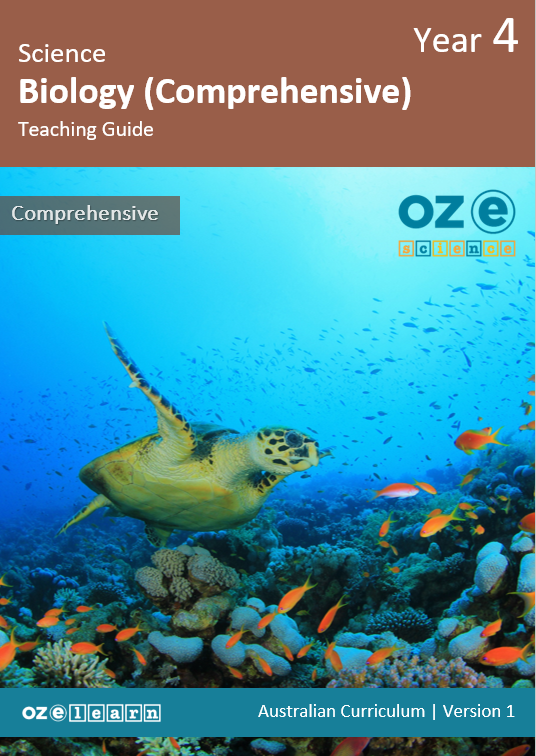Oz-e-science
In Lessons 1 to 15 students learn about:
- symbiotic relationships where both living things benefit – mutualism
- symbiotic relationships between animals and plants/algae where both benefit – mutualism
- symbiotic relationships between flowering plants and pollinators where both living things benefit – mutualism
- the three steps to asking questions about the world around us
- symbiotic relationships where one animal benefits and the other animal doesn’t and is not harmed – commensalism
- symbiotic relationships where one living thing benefits and the other does not benefit but is not harmed – commensalism
- the scientific method Charles Darwin followed when he observed, questions and hypothesised about the possible pollinator of an unusual plant
- symbiotic relationships where one living thing is harmed – parasitism
- predator/prey relationships
- the life cycles of plants
- the life cycles of animals
- the process of metamorphosis
- the field trip and how to plan
- how to write a script to use in their documentary using information gathered from the field trip
- how to plan an expo to communicate to others what was learned about their chosen specimen.
- Report on a mutual relationship between two living things.
- Classify mutual relationships in a matching game.
- Sequence the steps of pollinations in a storyboard.
- Explain the three steps to developing questions.
- Observe, question and hypothesis as Charles Darwin did.
- Describe predator/prey relationships between two living things.
- Write a short report on a predator/prey relationship.
- Design a predator.
- Write a short report about the life cycle of the Galapagos tortoise.
- Plan a field trip.
- Create a short documentary on an iPad.
- Plan and expo to communicate to others about a chosen specimen.
Progress Tests
Progress tests are conducted after every second lesson, allowing teachers to monitor student understanding of the concepts taught over the past two lessons and to identify where reteaching is needed. The Teaching Guide contains the testing questions, and the Student Workbook has a section where students write their answers and score themselves.
Structured Research Activity
The Structured Research Activity (SRA) for this unit is:
Students create and present a mini documentary about a living thing. The SRA takes place over two lessons so students can apply the Science Understanding and Science Inquiry Skills covered in the unit. Teachers use the Guide to Making Judgements, which is included in the Teaching Guide, to mark the SRA.
End-of-Unit Assessment
The last lesson is the end-of-unit assessment, which has a variety of question formats (e.g. label the diagram, circle the correct answer) to assess student mastery of content from the unit. The end-of-unit assessment is in the Teaching Guide. Teachers copy the assessment and distribute to students at testing time.
Progress tests are conducted after every second lesson, allowing teachers to monitor student understanding of the concepts taught over the past two lessons and to identify where reteaching is needed. The Teaching Guide contains the testing questions, and the Student Workbook has a section where students write their answers and score themselves.
Structured Research Activity
The Structured Research Activity (SRA) for this unit is:
Students create and present a mini documentary about a living thing. The SRA takes place over two lessons so students can apply the Science Understanding and Science Inquiry Skills covered in the unit. Teachers use the Guide to Making Judgements, which is included in the Teaching Guide, to mark the SRA.
End-of-Unit Assessment
The last lesson is the end-of-unit assessment, which has a variety of question formats (e.g. label the diagram, circle the correct answer) to assess student mastery of content from the unit. The end-of-unit assessment is in the Teaching Guide. Teachers copy the assessment and distribute to students at testing time.


